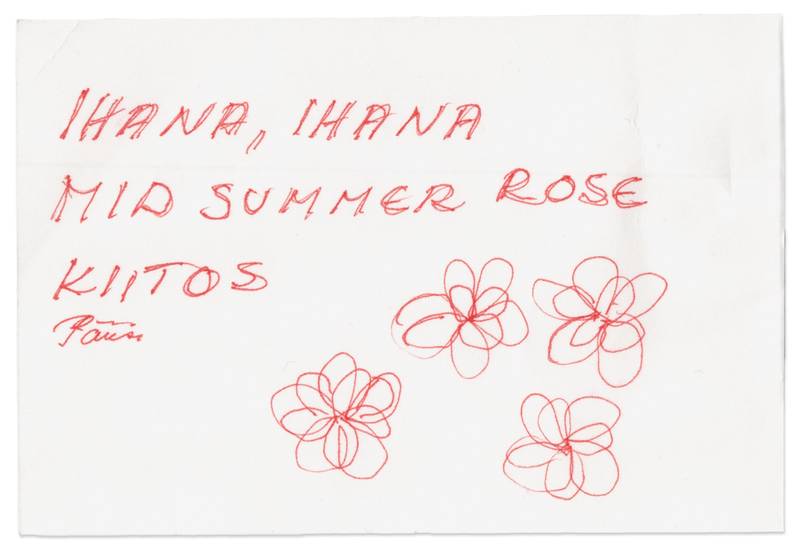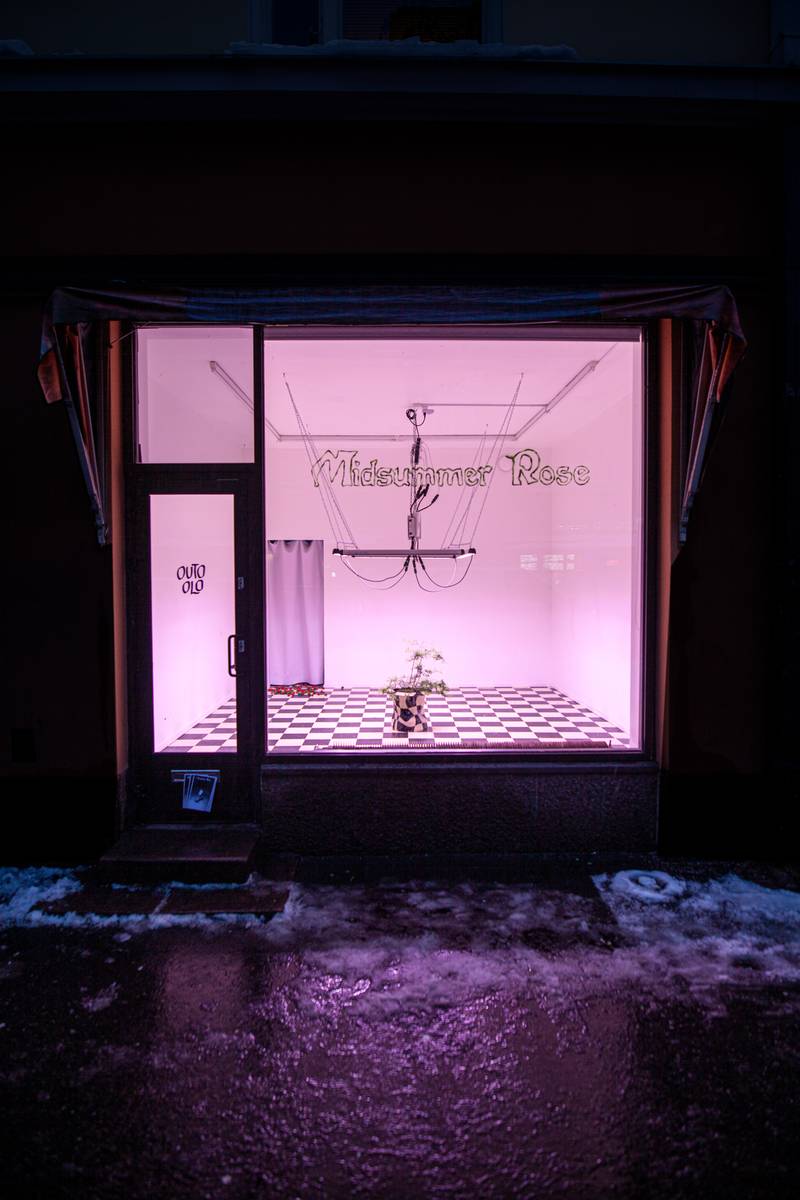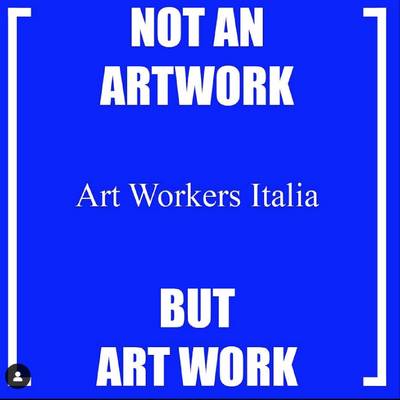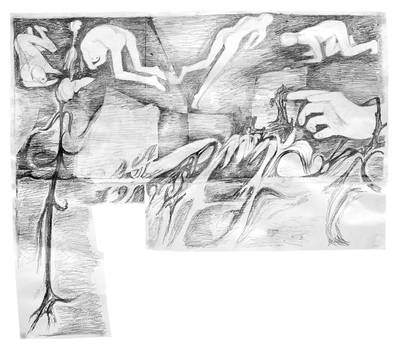

Note left at the gallery door by a passerby during the Midsummer Rose exhibition at Outo Olo in January. Photo courtesy of Tuomo Tuovinen.
Tuomo Tuovinen is an artist (Who isn’t?) who has been involved in running art spaces Sorbus and Outo Olo in a small retail space in Helsinki. He is also a member of Sorbus artist collective and Mustarinda association.
I was doing some small renovations in the back room of Outo Olo Art Space. It was January, and the Midsummer Rose group exhibition could only be viewed through the window from outside on the street. The artists had planned to make another kind of exhibition in the space the previous summer, but their show had to be postponed because of the pandemic. This rescheduling prompted their idea of bringing summer to the middle of winter.
The centerpiece of the show was a juhannusruusu (midsummer rose) bush growing out of a magician’s hat—a ceramic work by Man Yau—in the middle of the gallery. The rosebush had been sourced from a store that happened to sell dormant plants during off-season. With the help of industrial grade plant lights, the bare branches gradually grew leaves, and eventually blossomed. The seemingly simple installation had required a lot of organising work by various people, and despite LED technology, a noticeable amount of electricity. In the midst of working on a resource-heavy exhibition, there can sometimes be a time when you ask yourself: is this actually worth it?


Street view of Outo Olo during Midsummer Rose exhibition, 2021. Image courtesy of Lukas Malte Hoffman and Susan Kooi.
The installation also included a soundtrack—an ambience mix by Malibu—that was amplified into the street, and we had been trying to adjust the volume so that it wouldn’t bother the neighbours. When I heard a sound at the door, I immediately thought that someone had showed up to complain about the noise. Through the window I could see a familiar person, who lives somewhere along the street, trying to shove a piece of paper through the mail slot.
I’d become acquainted with the neighbour—who I’d say is now in their late 60s—during the past seven years, when a working group that I’m part of ran an art space called Sorbus in the same street level premises. The neighbour often passed by, and we would wave at each other through the window. They had always been sympathetic and showed some kind of interest towards the art space, but had never stepped foot inside, deflecting my invitation to come see one of the exhibitions by saying, “I would get too hot in my winter jacket”. Neither had they ever commented on any of the exhibitions Sorbus hosted throughout the years. Based on our few brief chats on the street, I might describe them as a happy nihilist. They had once explained how in general, they didn’t see life as very meaningful or exciting, yet found some joy from just going for walks along Vaasankatu and observing any small changes taking place in the area, be it people, businesses, or natural phenomena. One year during a streetside Christmas season encounter, they told me they’d never liked Christmas, not even as a child, and now in their later years they were happy to not bother with it.
As I opened the door, they immediately handed me a handwritten card that I didn’t have time to look at before they bursted into overflowing praise:
– Is it actually a real living juhannusruusu? This is so perfect! How did you come up with this wonderful idea? It brings some light into this cold darkness. This has given me so much joy as I’ve been passing by. And it’s a bit like myself: I don’t celebrate Christmas but I sing Christmas songs during the summer. How do you artists come up with these things? And I love the name Outo Olo, my own mind is also a bit funny. I just can’t help but wonder where these wonderful ideas come from! Thank you so much!
When Sorbus gallery started, one of the goals, at least in my mind, was to also try and reach audiences from outside the professional art sphere. Maybe I wanted to believe that deep inside, all humans are artists. So we tried to write the communications in plain and understandable language; wrote “ART GALLERY, FREE ENTRANCE” on the door; distributed posters and flyers; hosted concerts that brought in people from the music scenes; and once removed the big gallery window separating the art from the street. But despite some rare out-of-the-blue encounters, I became quite aware of the invisible but strong border between grassroots contemporary art and people who aren’t in some way engaged with it. It could well be that most of the people who generally sympathised with the space on their street and said hi to us never even thought about entering.
I explained to the neighbour that the exhibition was put together by an artist duo, Lukas Malte Hoffmann and Susan Kooi, and promised to pass the feedback on. It turned out that the neighbour had also visited the day before, and apparently expressed their enthusiasm in a similar way to someone who happened to be there, who must have been Lukas, not realising he doesn’t understand much Finnish. Polite as he is, Lukas had just listened all the way, and in the end smiled, and said “Kiitos!”







